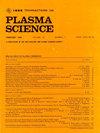Development of 120 kV and 60 kW Three Phase LCC Resonant Converter for Electron Beam Welding System
IF 1.3
4区 物理与天体物理
Q3 PHYSICS, FLUIDS & PLASMAS
引用次数: 0
Abstract
This article describes the development of a 120 kV and 60 kW cathode power supply (CPS) for an electron beam welding (EBW) system. Since the developed CPS is based on a three phase LCC resonant converter, it shows many superior features such as parasitic component utilization and low output voltage ripple. In addition, by adopting a symmetrical bipolar voltage multiplier (SBVM) as the CPS rectifier, the voltage imbalance among SBVM stages can be reduced even at the high output current. Therefore, the CPS can effectively achieve the output voltage of 120 kV and output power of 60 kW with low voltage stress on SBVM components. Furthermore, by using phase shift modulation (PSM) for load regulation, the conduction and switching losses are reduced in the light load operation due to the fixed operating frequency and small circulating current compared with the conventional pulse frequency modulation (PFM). For the practical use of the three phase LCC resonant converter with SBVM, several issues about the implementations of the transformer and interleaved PSM controller are addressed. The developed CPS is installed on the 120 kV and 60 kW EBW systems and the experimental results are presented to verify the performance of the developed CPS.电子束焊接用120 kV、60 kW三相LCC谐振变换器的研制
本文介绍了一种用于电子束焊接(EBW)系统的120千伏60千瓦阴极电源(CPS)的研制。由于所开发的CPS基于三相LCC谐振变换器,因此具有寄生元件利用率高、输出电压纹波小等优点。此外,采用对称双极电压乘法器(SBVM)作为CPS整流器,即使在高输出电流下,也可以减小SBVM级之间的电压不平衡。因此,CPS可以有效地实现120 kV的输出电压和60 kW的输出功率,同时对SBVM组件施加较低的电压应力。此外,采用相移调制(PSM)进行负载调节,与传统的脉冲调频(PFM)相比,由于工作频率固定,循环电流小,从而降低了轻负载工作时的导通和开关损耗。为使带SBVM的三相LCC谐振变换器实际应用,讨论了变压器和交错PSM控制器的实现问题。在120 kV和60 kW电路战系统上安装了该系统,并通过实验验证了该系统的性能。
本文章由计算机程序翻译,如有差异,请以英文原文为准。
求助全文
约1分钟内获得全文
求助全文
来源期刊

IEEE Transactions on Plasma Science
物理-物理:流体与等离子体
CiteScore
3.00
自引率
20.00%
发文量
538
审稿时长
3.8 months
期刊介绍:
The scope covers all aspects of the theory and application of plasma science. It includes the following areas: magnetohydrodynamics; thermionics and plasma diodes; basic plasma phenomena; gaseous electronics; microwave/plasma interaction; electron, ion, and plasma sources; space plasmas; intense electron and ion beams; laser-plasma interactions; plasma diagnostics; plasma chemistry and processing; solid-state plasmas; plasma heating; plasma for controlled fusion research; high energy density plasmas; industrial/commercial applications of plasma physics; plasma waves and instabilities; and high power microwave and submillimeter wave generation.
 求助内容:
求助内容: 应助结果提醒方式:
应助结果提醒方式:


